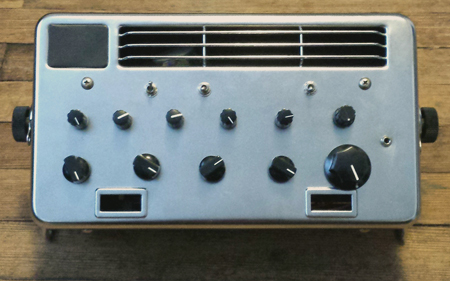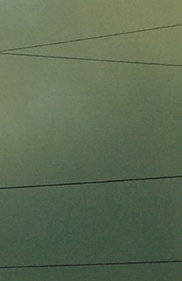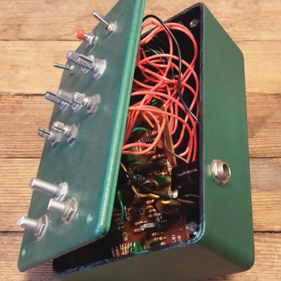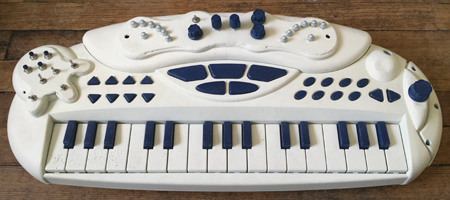


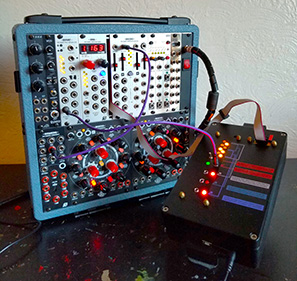

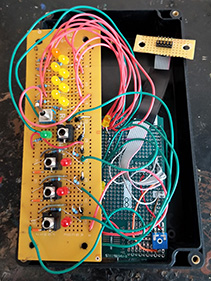

The topmost gate is high when more of the Leibniz bits are active and low when more of the bits are inactive. The middle gate performs the same logic, but only for the 4 most significant bits. The bottom gate does the same but for the 4 least significant bits. i added a switch to choose how to resolve ties: when the switch is up, the most significant bit is used to resolve all ties. When down, signal from an input jack is read. Any positive voltage on this jack is considered an active bit in tie resolution. There are LED's to show the state of each gate as well as the input jack. The top 8 LED's on the device illustrate the Leibniz data being read.

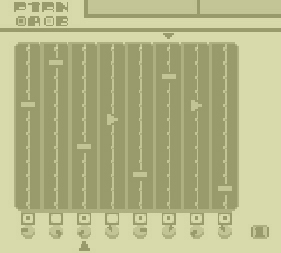

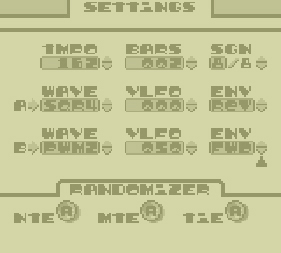

Sludgeon2 is coded in C and compiled with GBDK.
Sludgeon2 Game Boy program (.gb ROM file)
Sludgeon2 README (.txt file)
Sludgeon2 development replaced Sludgeon development in 2004. The original Sludgeon .gb ROM file and README are still available.
Sludgeon Game Boy program (.gb ROM file)
Sludgeon README (.txt file)

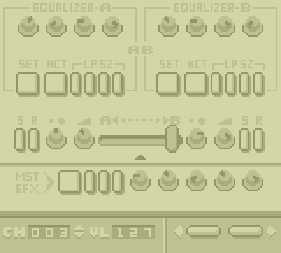

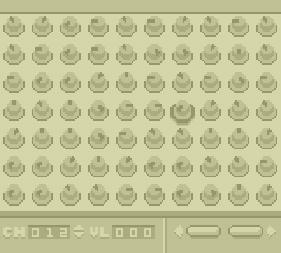

The original design was extended in 2006 to emulate two additional Faderfox models. The Faderfox LD2 emulation is a screen comprised entirely of rotating knobs. The Faderfox DJ1 emulation is a collection of rotating knobs, buttons, and a crossfader arranged in a rough estimation of a standard dj mixer. The Select and Start buttons are used to switch between all 3 hardware emulations.
Faderfox Jr. is coded in C and compiled with GBDK. The Windows application is written in C++ and compiled with Visual Studio.
Faderfox Jr. Game Boy program and Windows application (.zip file with all necessary files)
Faderfox Jr. README (.txt file)

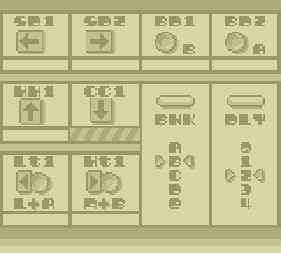



Shittracker was intended to replace Pounder. Shittracker utilizes a horizontal pattern editor, a set of randomizers, and a sample editor with rudimentary effects. Shittracker features 5 drum kits, each with 8 percussion samples including 909-like bass drums, snares, high hats, crash cymbols, and toms. A text-only version of Pounder was used to test the samples that were being imported into Shittracker. Because of this, Pounder includes the same drum kits as Shittracker. No stable version of Shittracker was ever made available.
Pounder and Shittracker are both coded in C and compiled with GBDK.
Pounder Game Boy program (.gb ROM file)
Pounder README (.txt file)
Shittracker README (.txt file)

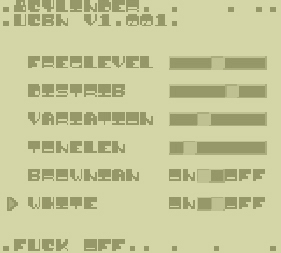

UCBN is coded in C and compiled with GBDK.
UCBN Game Boy program (.gb ROM file)
UCBN README (.txt file)

